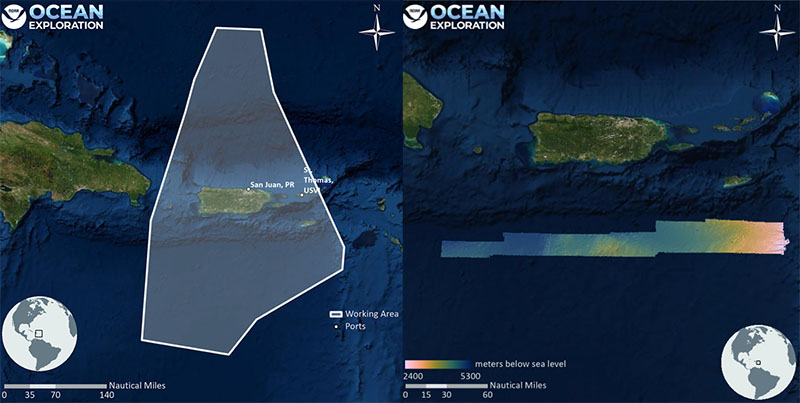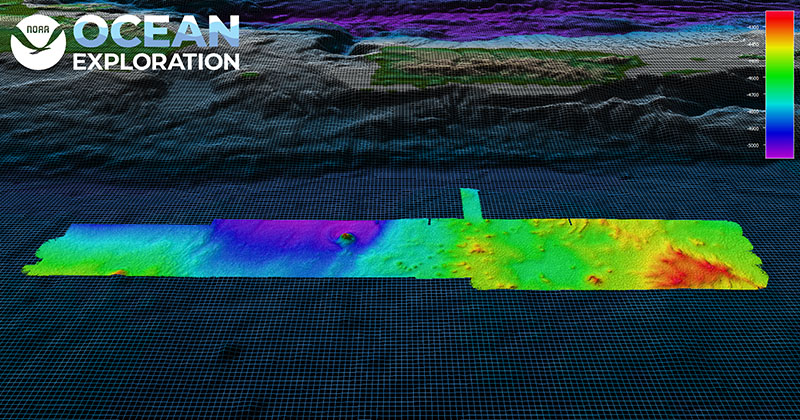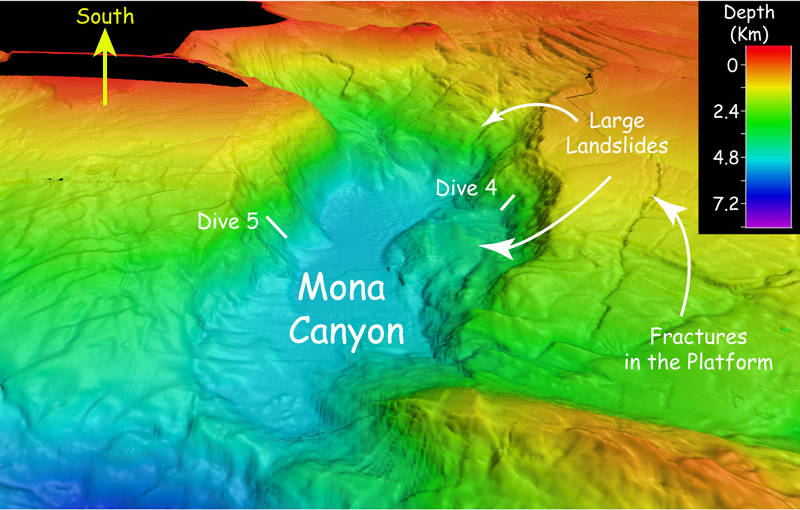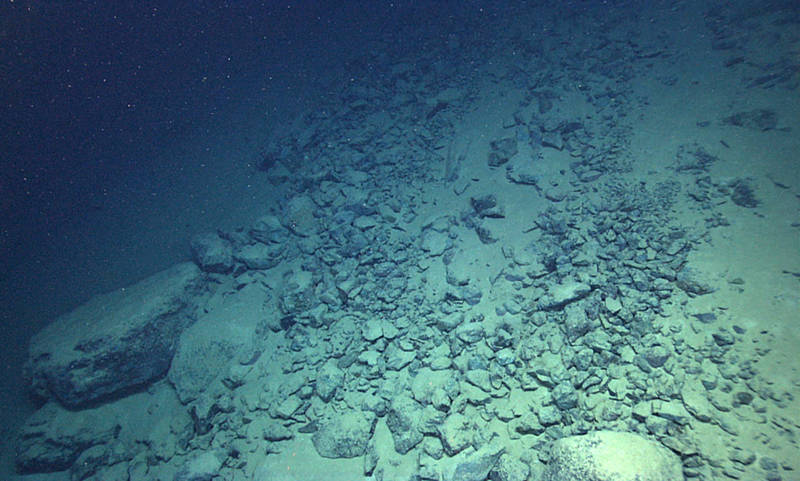Voyage to the Ridge 2022
May 14 - September 2, 2022
Returning to Puerto Rico and the U.S. Virgin Islands
From August 25 through September 1, 2022, NOAA Ship Okeanos Explorer will be conducting remotely operated vehicle (ROV) dives in U.S. waters in the vicinity of Puerto Rico and the U.S. Virgin Islands. The original plan for this period of time, part of the third Voyage to the Ridge 2022 expedition, was to stay within the Mid-Atlantic Ridge region. However, unexpected logistical circumstances meant that operations along the Mid-Atlantic Ridge had to be cut short so that the ship could return to port.
The exploration and mapping that will now take place during the Puerto Rico and U.S. Virgin Islands portion of this expedition is a testament to the adaptability and flexibility of ship-based and onshore scientists, and of the system of telepresence-enabled exploration in general. Once the call was made to return to San Juan for a temporary port-stop, scientists mobilized to work together to propose, discuss, and decide on new priority dive targets in the region within a very short period of time.
Luckily, the ship has a rich history in the region, including ROV explorations of the region in 2015 and also in 2018, and mapping expeditions earlier this year, from which both scientists and the public can draw on to get a sense of what is to come. Below, take a look at some of the highlights of past ocean exploration aboard NOAA Ship Okeanos Explorer in the area.
A Sea Star Not Seen for Over a Century
A Species New to Science, Described Entirely by Video Data
Detailed Mapping within the Region


Geohazard Study and Prediction
In order to better prepare for and to increase our ability to predict marine hazard events like earthquakes, underwater landslides, and tsunamis, we must first better understand these hazards. We can do that by mapping the features, for a large-scale understanding, and by getting eyes on the seafloor through tools like the video imagery provided by remotely operated vehicles, to better understand the geologic setting in which these events occurred. To learn more, check out this excellent essay on conducting geohazard research and this one on tectonic activity in the area.


Expanding Understanding of Protected Areas
On November 2, 2018, we dove in Buck Island Reef National Monument and surrounding waters, approximately four miles north of St. Croix in the Caribbean Sea. This was the deepest dive ever conducted inside the monument, and provided “an expansion of knowledge” about biodiversity within the monument. This kind of exploration of deep-water habitats and resources within protected areas provides crucial information to park managers.
Published August 25, 2022